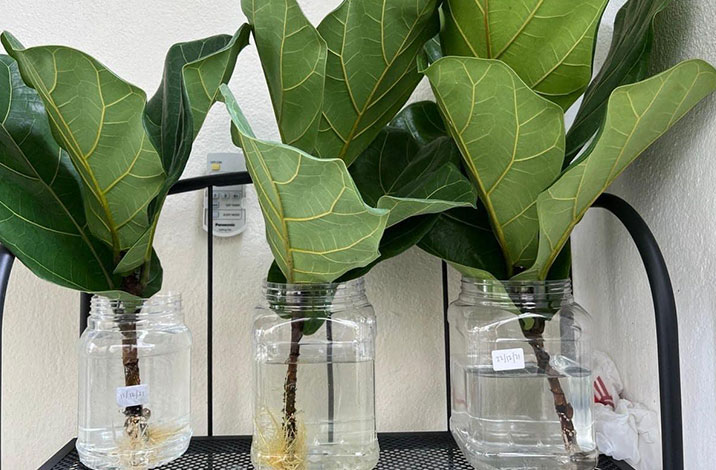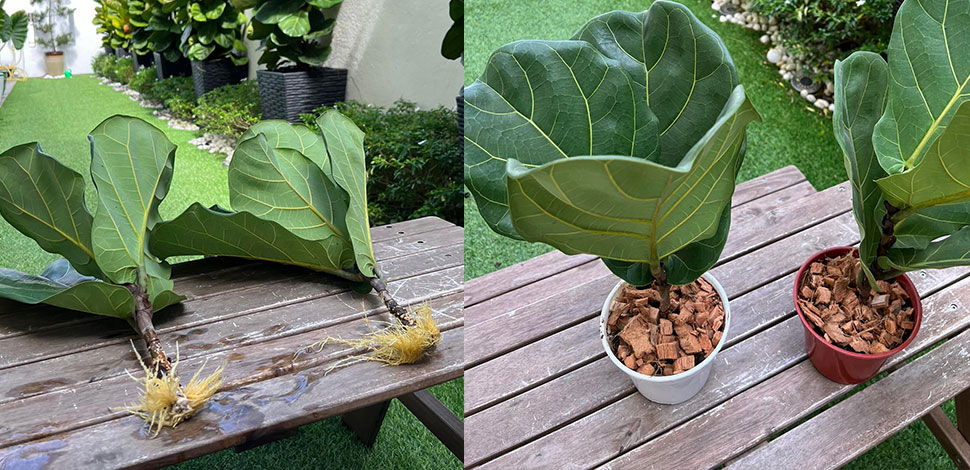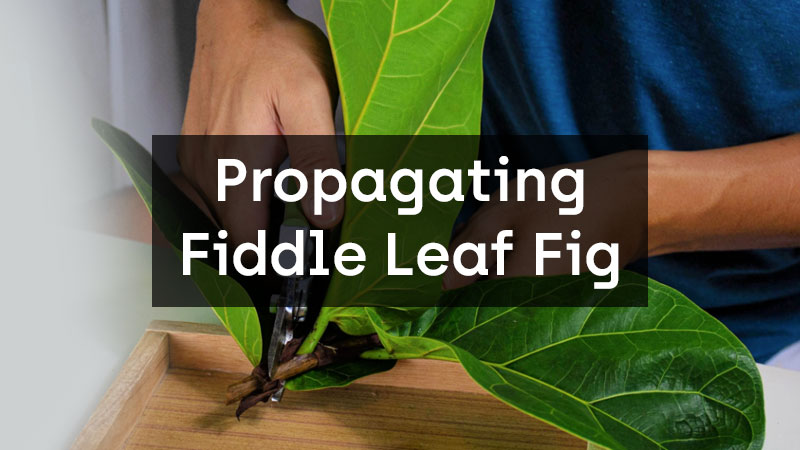Table of Contents
- Understanding Fiddle Leaf Fig Propagation
- Materials Needed for Propagation
- Steps for Propagating a Fiddle Leaf Fig
-
- Step 1: Choose the Right Time
- Step 2: Select the Cutting
- Step 3: Prepare the Cutting
- Step 4: Root the Cutting
- Step 5: Monitor the Cutting
- Step 6: Transplant the Cutting
- Step 7: Care for the New Plant
-
- Troubleshooting Common Problems
- Conclusion
- FAQs
1. Understanding Fiddle Leaf Fig Propagation
Before we dive into the propagation process, it’s essential to understand how fiddle leaf figs propagate naturally. In their native habitat, fiddle leaf figs grow in tropical rainforests and can reproduce sexually or asexually. The asexual propagation process is known as vegetative propagation, where new plants can grow from the parent plant’s stems or leaves.
When you propagate a fiddle leaf fig, you’re essentially creating a clone of the parent plant. The new plant will have the same genetic makeup, growth habits, and leaf characteristics as the parent plant.
2. Materials Needed for Propagation
Before you start propagating your fiddle leaf fig, you’ll need to gather some materials:
- Sharp pruning shears or scissors
- A clean, sharp knife
- A clean, clear jar or vase (if using the water method)
- Distilled or filtered water (if using the water method)
- A well-draining potting mix (if using the soil method)
- A clean pot with drainage holes (if using the soil method)
- A rooting hormone (optional)
3. Steps for Propagating a Fiddle Leaf Fig
Step 1: Choose the Right Time
The best time to propagate a fiddle leaf fig is in the spring or early summer when the plant is actively growing. This is when the plant is most responsive to the propagation process.
Step 2: Select the Cutting
Select a healthy stem from your fiddle leaf fig that’s at least 7 inches (18cm) long and has several leaves attached. Make sure the stem is strong and doesn’t have any signs of damage or disease.

Step 3: Prepare the Cutting
Using sharp pruning shears or scissors, make a clean cut on the stem just below a leaf node. A leaf node is where a leaf is attached to the stem. Remove any leaves from the lower third of the stem.
Step 4: Root the Cutting
There are two methods for rooting a fiddle leaf fig cutting: in water or soil.
Water Method
Place the stem cutting in a clean, clear jar or vase filled with distilled or filtered water. Make sure the water covers the bottom of the stem but doesn’t touch the leaves. Place the jar or vase in a bright, indirect light location, and change the water every few days.
Soil Method
Dip the cut end of the stem in rooting hormone (optional) and plant it in a well-draining potting mix in a clean pot with drainage holes. Water the soil and place the pot in a bright, indirect light location.
To assist your plant in growing new roots faster, employ a rooting hormone. Adhere to the instructions on the bottle, and immerse the stem once before positioning it in water or soil.

Step 5: Monitor the Cutting
Whether you choose the water or soil method, it’s crucial to monitor the cutting’s progress regularly. Look for signs of new growth, such as new leaves or roots. Keep the soil or water moist but not waterlogged.
Step 6: Transplant the Cutting
Once the cutting has rooted, and you see new growth, it’s time to transplant it into a larger pot. Select a pot that’s one size larger than the current one, and fill it with fresh, well-draining potting soil. Carefully remove the cutting from the water or soil and plant it in the new pot. Water the soil and place
Once the roots have grown to at least an inch long, it’s time to plant the cutting. Here’s how:
- Choose a pot that is slightly larger than the root ball of your cutting.
- Fill the bottom of the pot with a layer of well-draining soil, such as a mixture of potting soil, perlite, and sand.
- Make a small hole in the center of the soil and gently lower the cutting into the hole.
- Hold the cutting in place with one hand while you use the other hand to gently pack soil around the base of the stem.
- Water the soil thoroughly, being careful not to overwater. Place the pot in a warm, bright location, out of direct sunlight.

Step 7: Care for the New Plant
Now that your new fiddle leaf fig plant is growing in its new pot, it’s important to provide it with the proper care. Here are some tips:
- Water: Water your new plant when the top inch of soil feels dry to the touch. Be careful not to overwater, as fiddle leaf figs are susceptible to root rot.
- Light: Fiddle leaf figs thrive in bright, indirect light. Place your plant near a north or east-facing window to provide it with the ideal light conditions.
- Humidity: Fiddle leaf figs prefer high humidity levels. You can increase humidity by placing a tray of water near the plant or misting the leaves regularly.
- Fertilizer: Feed your fiddle leaf fig plant with a balanced fertilizer every four to six weeks during the growing season.
4. Troubleshooting Common Problems
Propagating a fiddle leaf fig can be challenging, and there are some common problems you may encounter. Here are some troubleshooting tips:
- Yellowing leaves: This could be a sign of overwatering or underwatering. Adjust your watering schedule accordingly.
- Root rot: If you notice brown, mushy roots, your plant may be experiencing root rot. Stop watering immediately and repot the plant in fresh soil.
- No new growth: If you don’t see any new growth after several weeks, it’s possible that the cutting hasn’t rooted correctly. Try propagating another cutting.
- Wilting leaves: This could be a sign of underwatering. Water your plant immediately and adjust your watering schedule.
5. Conclusion
Propagating a fiddle leaf fig can be a fun and rewarding experience. By following these steps and providing your new plant with the proper care, you can create a thriving new plant that will add beauty to your home for years to come.
6. FAQs
1. Can I propagate a fiddle leaf fig from a single leaf?
No, you need a stem with a leaf node to propagate a fiddle leaf fig successfully.







0 Comments